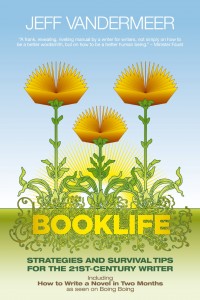Jonathan Wood is an Englishman in New York. His debut novel, No Hero was described by Publisher’s Weekly as “a funny, dark, rip-roaring adventure with a lot of heart, highly recommended for urban fantasy and light science fiction readers alike.” Barnesandnoble.com listed it has one of the 20 best paranormal fantasies of the past decade, and Charlaine Harris, author of the Sookie Stackhouse novels described it as, “so funny I laughed out loud.” His short fiction has appeared in Weird Tales, Chizine, and Beneath Ceaseless Skies, as well as anthologies such as The Book of Cthulhu 2 and The Best of Beneath Ceaseless Skies, Year One. He can be found online at www.jonathanwoodauthor.com
It is slightly embarrassing to admit, but starting out as an author, I didn’t really know what networking was. I knew I had to do it. But the actual “it” of it was never really explained to me.
I’d assume this was just my own failing, except I’ve been on Twitter. So I thought maybe some pointers might be in order.
1) It’s not about followers
You have 1 bajillion followers on Twitter. And an extra bajillion friends on Facebook. Congratulations. Well done. However, if you have also followed a bajillion people on Twitter, if you have friended a bajillion people on Facebook, then this is essentially a meaningless statistic.
I count myself as mildly discerning on Twitter because I take a full 8 nanoseconds to make sure that the person who followed me isn’t a pornbot, spambot, or a self-proclaimed marketing professional before I follow them back. Following someone back is the done thing. It is etiquette. People follow you back because it takes slightly less effort than scratching their arse.
If you have a bajillion followers and have only followed eight, then there is the chance people are following you for a reason. In order to hear what you have to say. Otherwise they’re just being nice. This is the law of social media.
2) It’s not about shouting the loudest
The way I like to think about Twitter and Facebook is to imagine it as if it is one giant crowded room. There are about a billion people in it. Screaming as loud as you can, “This person loved my book! This person gave me a 5 star review! Read my book! Read my book! LOVE ME!!!!” is not going to win you any friends in this room. Just like in a real room.
Imagine it. In a room full of a billion people there are at least billion things to pay attention to. That means there’s an awful lot of stuff to filter out. The first thing that has to go is the annoying, jumping, shouting people. The louder you yell, the less people pay attention.
3) Seriously with the auto-DMs
Sometimes I follow someone back on twitter and, just so I can regret it instantly, they automatically message me.
I assume they want me to think that they really care that I spastically clicked a small blue box to comply with social niceties. But they don’t. They care about appearing to care. A care which is completely undercut by the generic message to visit their facebook page, or webpage, or whatever the crap they want to sell me. It is the electronic equivalent of a used-car salesman’s greasy, desperately insincere handshake, given while he glances over your shoulder to see if anyone more attractive has walked in behind you. It does not work.
4) So what the hell is it?
Networking is a misleading word. It may even be a damaging word. Because what networking really is, is the thing we’d be doing if we weren’t so concerned about networking. It is simply going out and making friends.
Networking shouldn’t have an agenda. It shouldn’t be manipulative. It should just be hanging out in a social space and being a decent person, and enjoying actual genuine human contact. And then, if you need a favor, then you ask. Just like you would with a real friend. And if they need a favor, you help them out too. Just like with a real friend.
That’s all it is. That’s the whole secret. Friendship.
So go on Twitter. Go on Facebook. Go there and network. Go crazy with it. Just make sure you do what Bill and Ted would do. Be excellent to each other.


